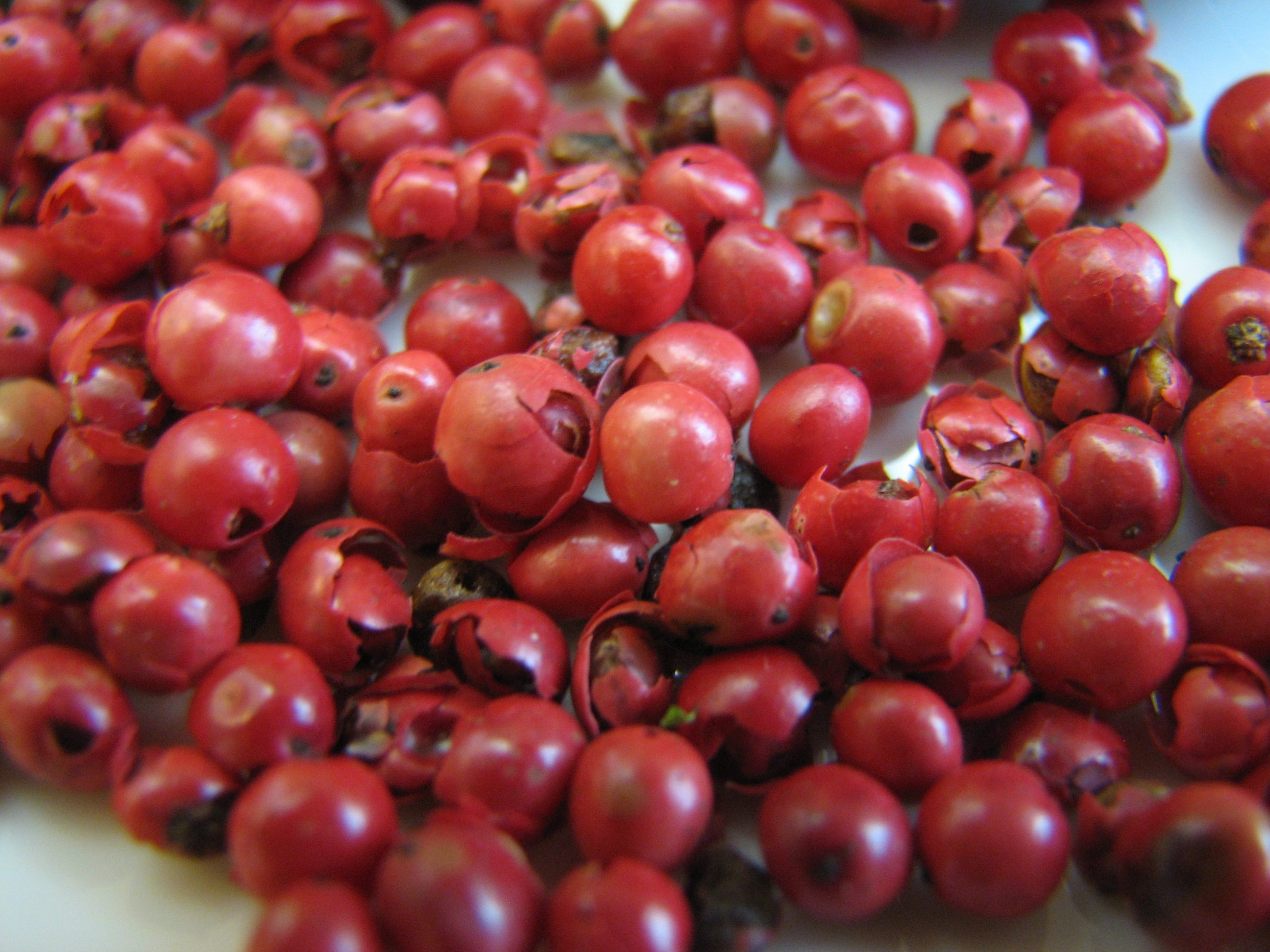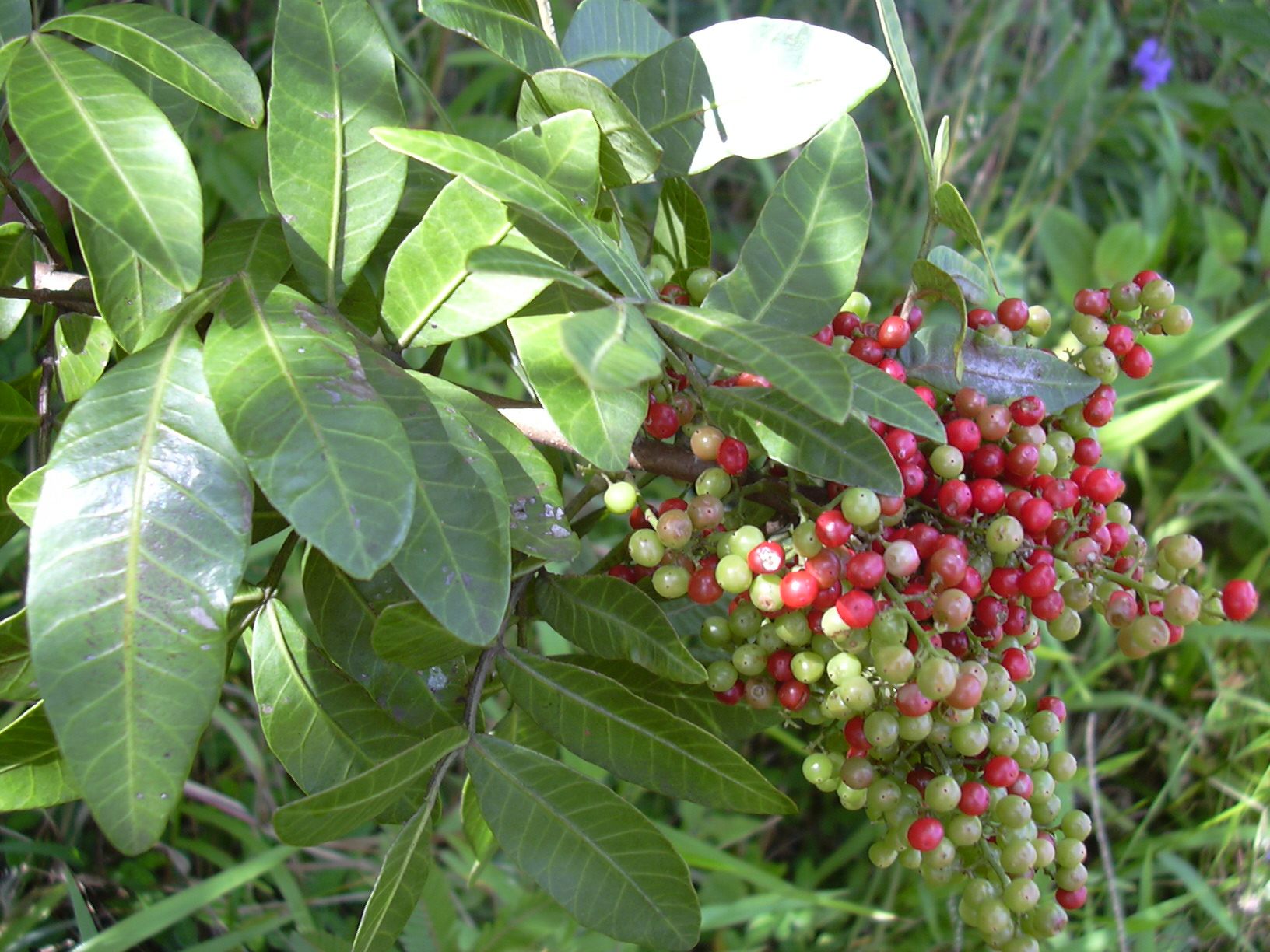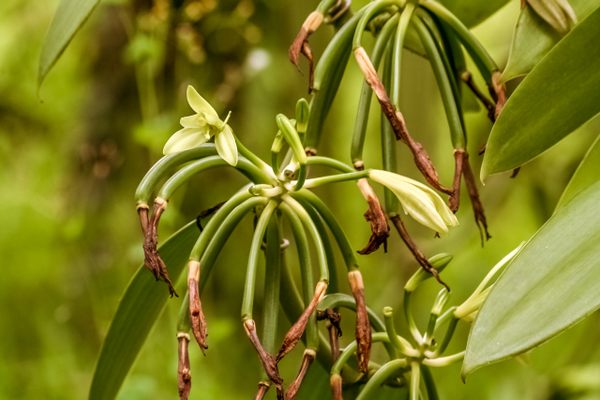When People Panicked Over Pink Peppercorns
They’re not even really pepper.

In order to add some color to their spice cabinets, people have been turning to pink peppercorns for decades. But in the 1980s, they were culinary newcomers, a colorful emblem of French nouvelle cuisine that took the food world by storm. Dishes at the time needed to be fresh, light, and colorful. The pink peppercorn was perfect. Prized by French chefs, their vibrant, intriguing color led American cooks to add it to pepper grinders as a rainbow accompaniment or as a rosy take on steak au poivre. As restauranteur Gordon Smith declared to the Chicago Tribune: “Pink peppercorns are the spice of the ’80s.”
But even six months into the 1980s, food journalist Nao Hauser spied a less-than-rosy future for the pretty spice. For one thing, it’s not actually pepper. Rather, it’s the near-identical berry of two types of South American plants. The flavor is only slightly peppery, and its flaky texture means it needs to be crushed instead of ground up. Since actual pepper fruits do ripen to red during their growing process, the confusion is understandable. But Hauser likened the in-demand pink peppercorn to a “princess with faked credentials.”
For a time, no one looked too closely at the pink peppercorn’s past. Until, that is, two plant researchers told the world they were potentially toxic.
Sandra Hicks, an herb consultant for the University of Michigan, came across the chic spice at a restaurant. Curious as to its origins, her research led her to University of Miami botanist Julia Morton’s research on the schinus terebinthifolius, or the Brazilian peppertree: the source of pink peppercorns. In a paper, Morton had determined that the peppertree was cousin to poison ivy, and that the fruit of the peppertrees flourishing across Florida were better avoided, much less eaten. The New York Times published a laundry list of potential effects: “symptoms similar to those caused by poison ivy, as well as violent headaches, swollen eyelids, shortness of breath, chest pains, sore throat, hoarseness, upset stomach, diarrhea, and hemorrhoids.”

The Food and Drug Administration responded. The agency banned pink peppercorns from importation in 1982, resulting in a drop-off of their use, which had been significant. “They are ubiquitous in fancy food shops, appearing in freeze-dried form, in vinegars, in mustards, and in combination with black, white, and green peppercorns,” the Times wrote. The French government protested. After all, many peppercorns were grown in French territory: the island of Réunion, near Madagascar.
What followed was a brief media furor. Importers insisted that soil and climate differences meant the peppercorns from Réunion were non-toxic, and that small quantities couldn’t be harmful. Morton warily countered that birds who ate the fruit of schinus terebinthifolius, especially in Florida, where it grew wildly, often suffered from intoxication-like effects. A sprinkling of people reported headaches and stomachaches, which they attributed to a sprinkling of pink pepper. “Here people are importing these things from France, and we’d pay people to take them out of the state,” Morton told the Wall Street Journal.
Some shops stopped selling pink peppercorns, but another threat was equally devastating: They became untrendy. During the furor, Barry Wine, the chef who claimed to have introduced pink peppercorns to the United States, called them “a cliche—like kiwis,” in the Wall Street Journal. (Kiwis were the pumpkin spice of the 1970s.) By 1983, the Baltimore Sun reported that the pink peppercorn had fallen from its lofty pedestal, a combination of chefs wary of poisoning their clientele and trends simply moving on.

But the pink peppercorn has persisted. The French submitted research to the FDA showing that their pink peppercorns were non-toxic, and the FDA eventually dropped the import ban. Rainbow peppercorn blends are once more to be had at Trader Joe’s, and the colorful fruits are still added to everything from pasta to ice cream. There might even be a simple explanation for the spate of rashes and headaches briefly associated with the pink peppercorn: Recent reports of allergic reactions to them are limited to a patient with a tree nut allergy. Robert L. Wolke, a Washington Post food columnist, chemist, and author, mused in 2002 that the problem was not the peppercorns, but the limits of nutritional science. In response to a question on pepper blends, he wrote, “About 20 years ago, I might have advised you to pour them all out onto a sheet of paper and, with a pair of tweezers, pick out all the pink ones and throw them away because they’re poisonous.”
Pink peppercorns do contain traces of irritating compounds, Wolke writes, that caused rashes and respiratory issues for people handling them in bulk. While eating or processing large quantities of schinus terebinthifolius could cause a reaction, few people are likely to chew them by the spoonful. Which is almost too bad—in Florida, the trees are now considered an invasive species.
Gastro Obscura covers the world’s most wondrous food and drink.
Sign up for our regular newsletter.


































Follow us on Twitter to get the latest on the world's hidden wonders.
Like us on Facebook to get the latest on the world's hidden wonders.
Follow us on Twitter Like us on Facebook